Eva Gonzalès (French, 1849 - 1883) was the only formal pupil Manet ever had, he was notoriously ill-disposed toward taking on students. Her painting of a nanny and her young charge, the first facing the viewer, the second turned toward a barred gate, is an unmistakable homage to Manet's The Railway. Her brushwork is similarly broad and energetic; it eliminates transitional tones and detail. Nevertheless, Gonzalès' painting feels different. Its open airiness contrasts with The Railway's restricted and compressed space.
Gonzalès was part of the impressionist circle in Paris, one of only four women generally associated with the group. She shared their interest in depicting modern life, although, like Manet, she did not join in the impressionists' exhibitions. This painting was shown at the Salon of 1878 and is perhaps her most accomplished work. Her family was a distinguished one. Her father was a well-known writer and her mother a musician, both of whom fostered her interest in the arts. This canvas was probably made in Dieppe, in Normandy. As the closest seaside resort to Paris, with a promenade, pebble beach, and casino, Dieppe was popular with well-to-do tourists who came for the season. The English nanny (Gonzalès' original title was Miss et bébé) is a sure mark of upper-class status.
[Oil on canvas, 65 x 81.4 cm]
![Jean-Baptiste-Camille Corot - A Wagon in the Plains of Artois [1871] by Gandalf's Gallery](http://farm8.staticflickr.com/7202/7127630055_554576478d.jpg)
![John Atkinson Grimshaw - Whitby [1883] by Gandalf's Gallery](http://farm9.staticflickr.com/8167/7127631697_6b3763ca2f.jpg)

![T Ramsey - View of Pond Street, Hampstead [c.1755] by Gandalf's Gallery](http://farm8.staticflickr.com/7127/6977749202_cb2c3b6367.jpg)

![Claude Buck - Things That Are Caesar's [1943] by Gandalf's Gallery](http://farm8.staticflickr.com/7125/6974695346_1ac1fdcedc.jpg)
![John Constable - Salisbury Cathedral from Lower March Close [1820] by Gandalf's Gallery](http://farm8.staticflickr.com/7065/6971910914_c9dd609f2d.jpg)

![Edouard Manet - The Railway [1873] by Gandalf's Gallery](http://farm8.staticflickr.com/7275/7115122435_b028c5cb44.jpg)
![Eduard Gaertner - Rear View of the House at Schloßfreiheit [1855] by Gandalf's Gallery](http://farm8.staticflickr.com/7069/7115123945_5004aa7d52.jpg)

![Alfred Thompson Bricher - Quiet Day near Manchester [1873] by Gandalf's Gallery](http://farm8.staticflickr.com/7211/6965982444_0510bdd2da.jpg)
![Edward Hicks - Peaceable Kingdom [c.1834] by Gandalf's Gallery](http://farm8.staticflickr.com/7182/7108856359_9b36560d81.jpg)
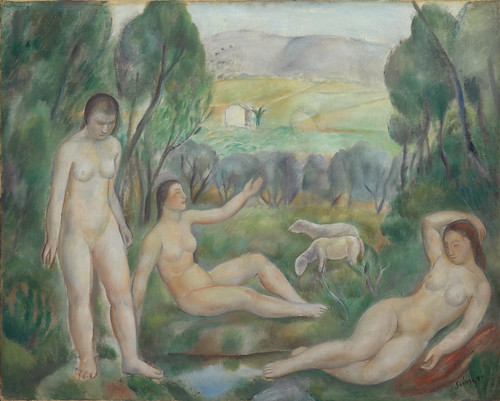
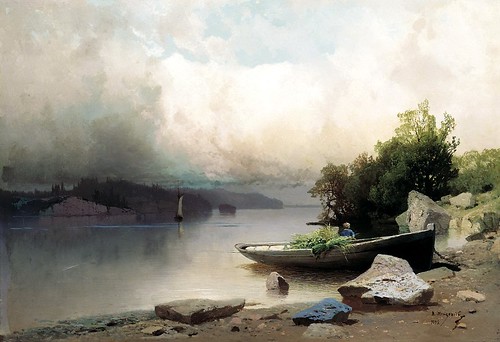
![Theodor Kaufmann - On To Liberty [1867] by Gandalf's Gallery](http://farm8.staticflickr.com/7247/6959299192_961b7215e7.jpg)
![Eva Gonzalès - Nanny and Child [1877-78] by Gandalf's Gallery](http://farm8.staticflickr.com/7204/7101438717_236868a972.jpg)
![Isaak Izrailevich Brodsky - Nanny With Children [1912] by Gandalf's Gallery](http://farm8.staticflickr.com/7218/7101439223_dafbe9b799.jpg)
![Vincent van Gogh - Memory of the Garden at Etten [1888] by Gandalf's Gallery](http://farm6.staticflickr.com/5449/7098323191_65e8be40ec.jpg)
![Aelbert Cuyp - The Maas at Dordrecht [c.1650] by Gandalf's Gallery](http://farm6.staticflickr.com/5325/6952250914_97f892f9ac.jpg)
![Imitator of Gustave Courbet - Landscape [19th century] by Gandalf's Gallery](http://farm8.staticflickr.com/7079/7095605373_9a04b314c8.jpg)
![Lev Kamenev - Landscape [1861] by Gandalf's Gallery](http://farm8.staticflickr.com/7202/7095605481_e5b8efaea7.jpg)
![Aert de Gelder - Judah and Tamar [c.1681] by Gandalf's Gallery](http://farm6.staticflickr.com/5449/6946809530_95a3b76ee1.jpg)
![Hendrick her Brugghen - Jacob Reproaching Laban [1627] by Gandalf's Gallery](http://farm8.staticflickr.com/7268/7092879113_3eb6ebb0cd.jpg)
![Childe Hassam - Improvisation [1899] by Gandalf's Gallery](http://farm8.staticflickr.com/7043/6943779578_8aa2b4b180.jpg)
![William Merritt Chase - Idle Hours [c.1894] by Gandalf's Gallery](http://farm8.staticflickr.com/7119/7089849343_3ed6dce4be.jpg)
![Ernest Lawson - The Harlem River [c.1911] by Gandalf's Gallery](http://farm8.staticflickr.com/7178/7086649407_b8b7a41d17.jpg)
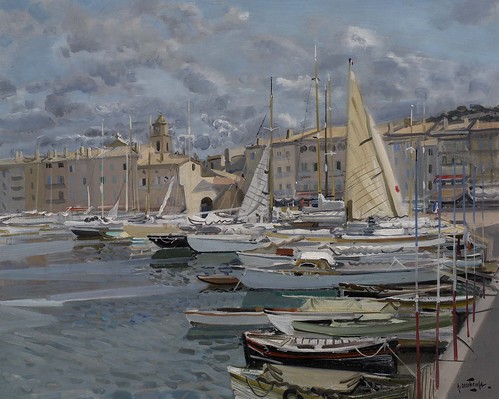
![Gustave Courbet - Girls on the Banks of the Seine [1857] by Gandalf's Gallery](http://farm8.staticflickr.com/7180/7083241909_e616f031b3.jpg)
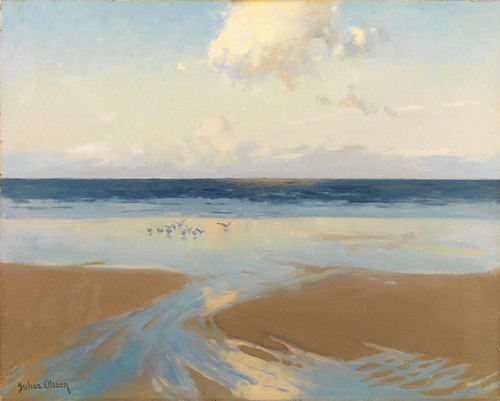
![Nicolas Poussin - The Finding of Moses [1651] by Gandalf's Gallery](http://farm6.staticflickr.com/5240/6933054982_20d4192c62.jpg)
![Sebastien Bourdon - The Finding of Moses [c.1655-60] by Gandalf's Gallery](http://farm6.staticflickr.com/5039/6933052320_954475705e.jpg)
![Ivan Shishkin - Edge of the Forest [1879] by Gandalf's Gallery](http://farm8.staticflickr.com/7213/6929962688_7ab1db7919.jpg)
![Anders Zorn - En Eva [1902] by Gandalf's Gallery](http://farm6.staticflickr.com/5463/7076039745_1e572dd452.jpg)
![Thomas Benham - The Days Catch [1890] by Gandalf's Gallery](http://farm8.staticflickr.com/7086/7073079133_451840e04e.jpg)
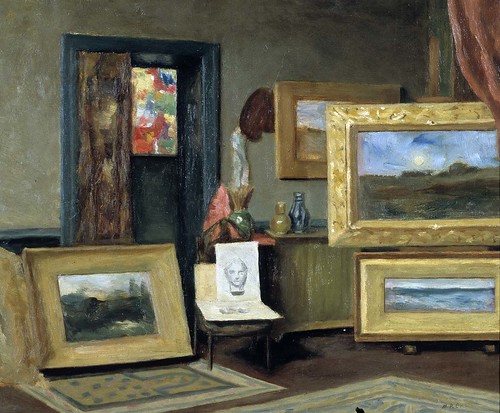

![Franz Roubaud - Cossacks in the Mountain River [1898] by Gandalf's Gallery](http://farm8.staticflickr.com/7221/6924144222_83f759abeb.jpg)
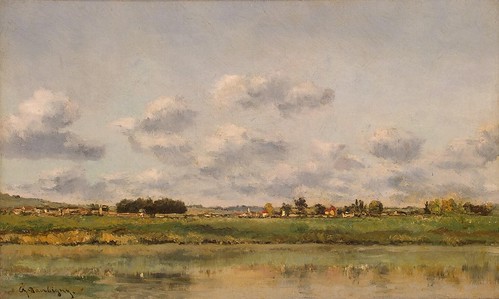
![Eugene Fromentin - The Banks of the Nile [1874] by Gandalf's Gallery](http://farm8.staticflickr.com/7211/7067146387_0929a45508.jpg)
![Alexander Ivanov - Appearance of Christ Before the People [1837-57] by Gandalf's Gallery](http://farm8.staticflickr.com/7106/7063686523_d36169d338.jpg)
![Louis Michel Eilshemius - Afternoon Wind [1899] by Gandalf's Gallery](http://farm8.staticflickr.com/7060/7063687029_acf2972354.jpg)
![Dirk Hals - The Fête Champêtre [1627] by Gandalf's Gallery](http://farm6.staticflickr.com/5444/6913898806_2c2664e893.jpg)
![David Teniers the Younger - The Covetous Man [c.1648] by Gandalf's Gallery](http://farm8.staticflickr.com/7056/6913898674_ec1d3e4218.jpg)
![Adolphe Monticelli - Sunset [c.1882-84] by Gandalf's Gallery](http://farm8.staticflickr.com/7247/6910005064_c4c0504de7.jpg)
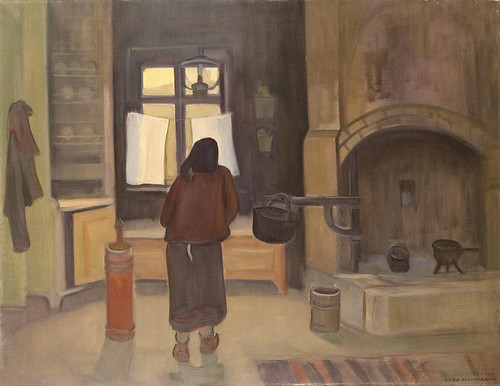
![Paul Gauguin - The Bathers [1897] by Gandalf's Gallery](http://farm8.staticflickr.com/7125/6906946292_baec68c60d.jpg)
![Eugene Boudin - Beach Scene, Trouville [c.1860-70] by Gandalf's Gallery](http://farm6.staticflickr.com/5450/6906948416_49a6776dfa.jpg)
![Auguste Renoir - Oarsmen at Chatou [1879] by Gandalf's Gallery](http://farm8.staticflickr.com/7231/6903986486_cf1e8907f5.jpg)
![Konstantin Korovin - View from the Terrace, Gurzuf [1912] by Gandalf's Gallery](http://farm6.staticflickr.com/5469/7050079259_dc1d153ba9.jpg)